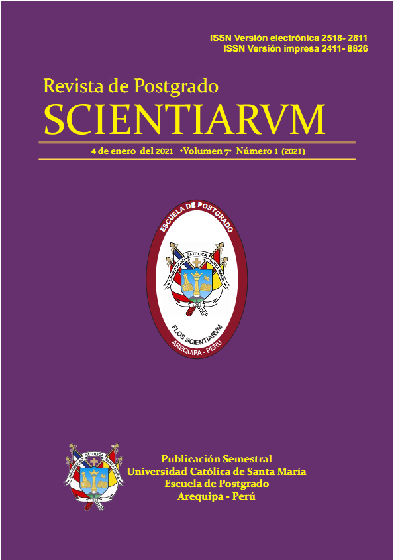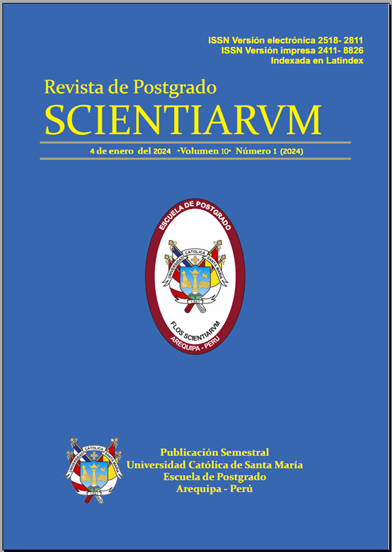BACTERIAS ENDOFÍTICAS DE ELODEA POTAMOGETON (“LLACHU”) DEL LAGO TITICACA
ENDOPHYTIC BACTERIA OF ELODEA POTAMOGETON (“LLACHU”) FROM TITICACA LAKE
Pedro Ubaldo Coila Añasco1, Julio César Bernabé Ortiz2, Domingo Alberto Ruelas1
- Universidad Nacional del Altiplano, Puno - Perú
- Universidad Nacional de San Agustín, Arequipa - Perú.
RESUMEN: El “llachu” (Elodea potamogeton) es una planta acuática del Lago Titicaca, alimento para el ganado vacuno del anillo circunlacustre. Algunas zonas del lago se han eutrofizado por la polución; aun así, la planta crece. Siendo uno de los mecanismos de sobrevivencia, la interacción simbiótica con microorganismos, el objetivo del estudio fue aislar y caracterizar molecularmente algunas bacterias endofíticas de la planta. Para el aislamiento, las muestras fueron lavadas y desinfectadas con alcohol 70%, hipoclorito de sodio 0,5% y Tween 80%; luego, se homogenizó y una alícuota sembrada en medio Luria-Bertani (LB), se eligieron tres cepas para su resembrado en agar LB sólido. De las cepas puras, se extrajo DNA con la mezcla fenol-cloroformo-alcohol isoamílico, cuantificándose por espectrofotometría. Se amplificó el gen 16S rDNA por PCR; los amplicones se remitieron a la Functional Biosciences Inc. de Estados Unidos para su secuenciamiento. Las secuencias se editaron con BioEdit 7.0.0 y se eligieron secuencias similares con BLASTn del GenBank, para realizar el alineamiento múltiple de secuencias con Clustal W. Para determinar las relaciones evolutivas se utilizó el MEGA7 construyéndose árboles filogenéticos por el método de Neighbor-Joining. El análisis molecular demuestra que la cepa Sample10ped corresponde a Pantoea sp. con una identidad superior al 76%; la cepa Sample11pe a Pseudomonas sp. con un 100% de identidad; y, a la cepa Sample12ped a Raoultella terrígena sp. o Klebsiella sp. con una identidad de 99%. Las secuencias de las dos últimas, fueron registradas en el GenBank, cuyas accesiones son SUB4288247 y SUB4252655.
Palabras clave: Bacteria endofítica, Elodea potamogeton, gen 16S rDNA, filogenia.
ABTRACT: The “llachu” (Elodea potamogeton) is an aquatic plant from Lake Titicaca, food for the cattle of the circumlacustrine ring. Some areas of the lake have been eutrophied by pollution; even so, the plant grows. Being one of the survival mechanisms, the symbiotic interaction with microorganisms, the objective of the study was to isolate and molecularly characterize some endophytic bacteria of the plant. For isolation, the samples were washed and disinfected with 70% alcohol, 0.5% sodium hypochlorite and 80% Tween; then, it was homogenized and an aliquot seeded in Luria-Bertani (LB) medium, three strains were chosen to be reseeded on solid LB agar. From the pure strains, DNA was extracted with the phenol-chloroform-isoamyl alcohol mixture, quantifying by spectrophotometry. The 16S rDNA gene was amplified by PCR; amplicons were submitted to Functional Biosciences Inc. in the United States for sequencing. The sequences were edited with BioEdit 7.0.0 and similar sequences were chosen with BLASTn from GenBank, to perform multiple alignment of sequences with Clustal W. To determine evolutionary relationships, MEGA7 was used, constructing phylogenetic trees by the Neighbor-Joining method. Molecular analysis shows that the Sample10ped strain corresponds to Pantoea sp. with an identity greater than 76%; the Sample11pe strain to Pseudomonas sp. with 100% identity; and, to the strain Sample12ped to Raoultella terrígena sp. or Klebsiella sp. with an identity of 99%. The sequences of the last two were registered in GenBank, whose accessions are SUB4288247 and SUB4252655.
Keywords: Endophytic bacteria, Elodea potamogeton, 16S rDNA gene, phylogeny
Revista Seleccionada
Enero 2021 Volumen 7 - Número 1 P 35-38
DOI: 10.26696/sci.epg.0128
Enlaces
CIENCIAS SOCIALES Y HUMANIDADES
LIMITACIONES Y PRINCIPALES RETOS DE LA ORALIDAD CIVIL EN EL SISTEMA JUDICIAL PERUANO
LA (IN)DEBIDA REGULACIÓN DE LA TUTELA CAUTELAR EN EL PROCESO DE AMPARO PERUANO
¿ES POSIBLE LA PROTECCIÓN INTERNACIONAL DE LOS DERECHOS DE LOS CONTRIBUYENTES?
CIENCIAS BIOLÓGICAS Y DE SALUD
EPIDEMIOLOGIA DE LA HIPERPLASIA PROSTATICA BENIGNA (BPH)
BACTERIAS ENDOFÍTICAS DE ELODEA POTAMOGETON (“LLACHU”) DEL LAGO TITICACA


